Wood Products Markets: Dynamics and Opportunities in the Forestry Industry
- August 22, 2024
- 0 comment
The wood products market is a critical component of the global economy, deeply intertwined with the forestry industry. It encompasses a vast array of products, including lumber, plywood, veneer, pulp, paper, and engineered wood products, all of which play a vital role in various sectors such as construction, furniture, packaging, and energy. The demand for wood products has been steadily increasing due to the growing global population, urbanization, and the push for sustainable building materials.
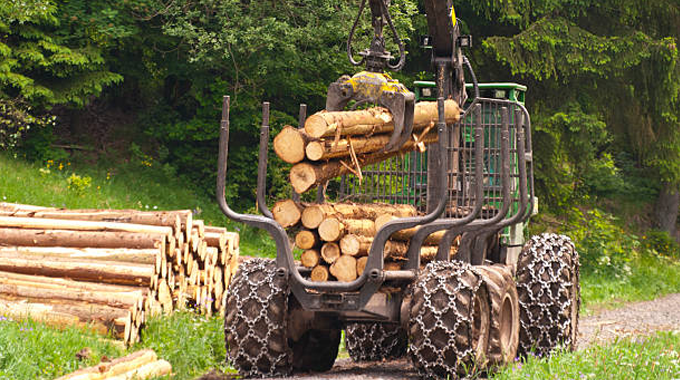
Wood products are not only essential for their economic value but also for their environmental benefits. Sustainable forestry practices ensure the continuous supply of these products while maintaining forest health and biodiversity. Wood, being a renewable resource, contributes to the circular economy, and its use in products that store carbon helps mitigate climate change. The forestry industry relies on a robust wood products market to sustain its operations, create jobs, and support rural economies.
Table of Content
- Key Segments of the Wood Products Market
- Global Market Trends and Forecasts
- Regional Market Analysis
- Sustainability and Certification in Wood Products Markets
- Opportunities in the Wood Products Market
- Challenges Facing the Wood Products Market
- FAQs
Lumber and Timber
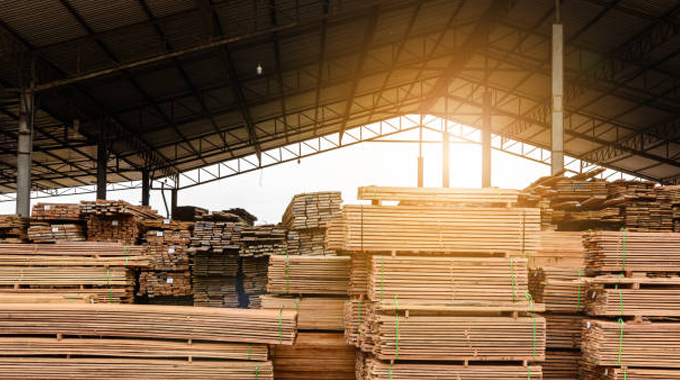
Market Demand and Applications
Lumber and timber are the backbone of the wood products market, with extensive applications in construction, furniture making, and various industrial uses. The demand for lumber has surged in recent years, driven by the construction boom in many parts of the world, particularly in residential housing and infrastructure projects. Timber, both softwood and hardwood, remains a fundamental material for framing, flooring, and finishing in building projects.
Regional Production and Trade Dynamics
North America and Europe are the leading producers of lumber and timber, with Canada, the United States, and Russia being key exporters. However, the dynamics of global trade are shifting, with emerging markets in Asia-Pacific, particularly China, increasing their share in both production and consumption. Trade policies, tariffs, and environmental regulations continue to influence the flow of timber across borders, making it a complex and dynamic segment of the wood products market.
Plywood and Veneer
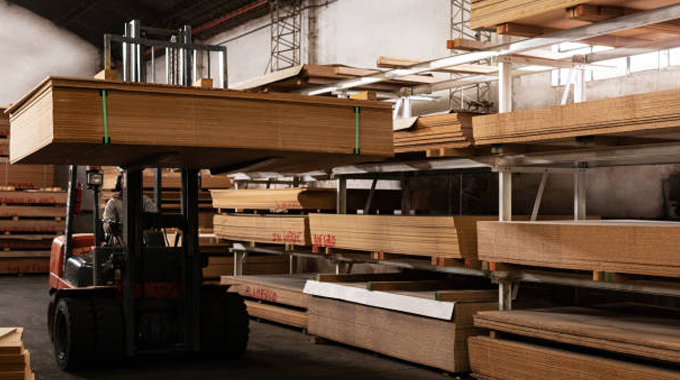
Uses in Construction and Furniture Industries
Plywood and veneer are essential materials in the construction and furniture industries, known for their strength, durability, and versatility. Plywood, made by gluing together layers of wood veneer, is widely used in structural applications, cabinetry, and paneling. Veneer, thin slices of wood, is primarily used for surface finishes and decorative purposes in furniture making and interior design.
Growth Trends and Challenges
The plywood and veneer markets have seen steady growth, particularly in regions where construction and furniture manufacturing are expanding rapidly. However, these segments face challenges such as the availability of quality raw materials, environmental concerns related to deforestation, and competition from alternative materials like MDF (medium-density fiberboard). Innovations in manufacturing processes and the use of sustainable wood sources are crucial for maintaining the growth trajectory of these products.
Pulp and Paper Products

Impact of Digitalization on Demand
The pulp and paper segment has experienced significant changes due to the digitalization of media and communication. The demand for traditional paper products, such as newsprint and writing paper, has declined in many parts of the world. However, there is still strong demand for packaging materials, tissue products, and specialty papers, driven by e-commerce and consumer goods industries.
Sustainable Practices and Innovations
Sustainability has become a central focus in the pulp and paper industry, with companies investing in eco-friendly practices, such as recycling and the use of certified wood. Innovations in pulping technology, reduced water and energy consumption, and the development of biodegradable packaging solutions are helping the industry adapt to changing market conditions and environmental expectations.
Engineered Wood Products
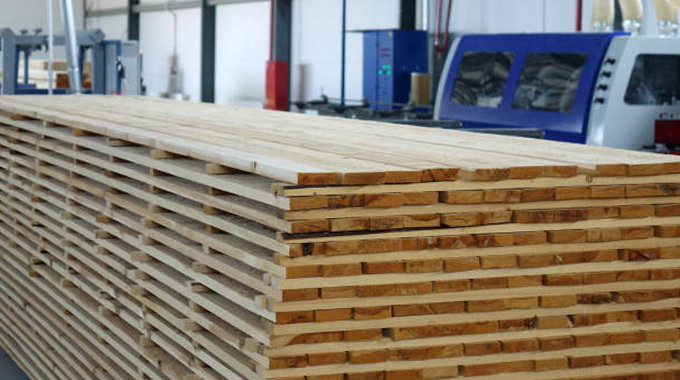
Advantages of Traditional Wood
Engineered wood products, such as cross-laminated timber (CLT), laminated veneer lumber (LVL), and oriented strand board (OSB), offer significant advantages over traditional solid wood. These products are designed to maximize strength, stability, and efficiency, making them ideal for modern construction projects, including tall wood buildings and prefabricated homes.
Market Growth and Emerging Technologies
The market for engineered wood products is growing rapidly, driven by the push for sustainable construction and the need for high-performance building materials. Advances in manufacturing technologies, such as computer-controlled cutting and assembly, are enabling the production of complex, custom-designed wood components. This segment is expected to see continued growth as more architects and builders embrace the benefits of engineered wood.
Global Market Trends and Forecasts

Current Market Size and Projected Growth
The global wood products market is poised for steady growth in the coming years, with increasing demand for sustainable building materials, packaging solutions, and renewable energy sources. Market analysts project that the market will expand at a compound annual growth rate (CAGR) of 5-7% over the next decade, with significant contributions from the construction and packaging sectors.
Influences of Global Economics on Wood Products Markets
The wood products market is highly sensitive to global economic conditions, including fluctuations in currency exchange rates, interest rates, and commodity prices. Economic slowdowns or recessions can dampen demand for wood products, particularly in construction and manufacturing. Conversely, economic growth in emerging markets can lead to increased demand and higher prices for wood products.
Impact of Climate Change and Sustainability Efforts on Supply and Demand
Climate change is both a challenge and an opportunity for the wood products market. On the one hand, rising temperatures and changing precipitation patterns can affect forest health and wood supply. On the other hand, the increasing focus on sustainability and carbon sequestration is driving demand for wood products as an environmentally friendly alternative to non-renewable materials. Companies that invest in sustainable forest management and carbon-neutral production processes are likely to benefit from these trends.
Regional Market Analysis
North America
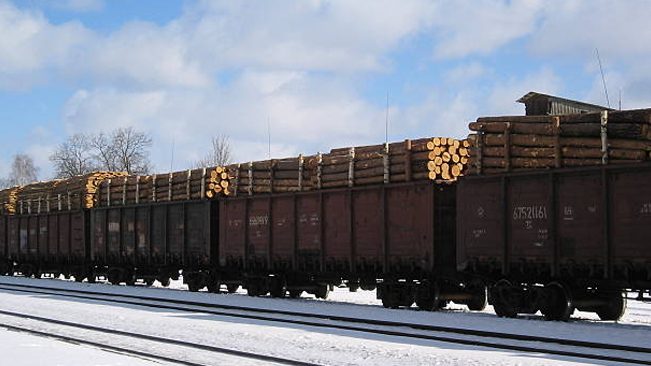
Major Players and Market Share
North America is home to some of the largest and most influential companies in the wood products market, including Weyerhaeuser, Georgia-Pacific, and West Fraser. These companies dominate the market with a significant share in lumber, plywood, and engineered wood products. The region’s vast forest resources and advanced manufacturing infrastructure contribute to its leading position in the global market.
Export and Import Trends
The United States and Canada are major exporters of wood products, with strong demand from Asia, particularly China and Japan. However, the region also imports certain wood products, such as tropical hardwoods and specialty veneers, to meet domestic demand. Trade policies, tariffs, and environmental regulations play a crucial role in shaping the export-import dynamics in North America.
Europe

Regulatory Environment and Market Dynamics
Europe’s wood products market is characterized by stringent environmental regulations and a strong focus on sustainability. The European Union’s Forest Law Enforcement, Governance and Trade (FLEGT) action plan and the EU Timber Regulation (EUTR) have set high standards for wood product imports and trade. These regulations, along with consumer preferences for certified sustainable products, influence the market dynamics in the region.
Key Markets Within the Region
Germany, Sweden, and Finland are key markets for wood products in Europe, known for their advanced forestry practices and high-quality wood products. The region also has a strong tradition of using wood in construction, furniture making, and paper production. Emerging markets in Eastern Europe are also contributing to the growth of the wood products industry in the region.
Asia-Pacific

Rapid Growth and Emerging Markets
The Asia-Pacific region is witnessing rapid growth in the wood products market, driven by the construction boom in countries like China, India, and Southeast Asian nations. The region’s growing middle class and increasing urbanization are fueling demand for furniture, housing, and packaging materials. However, the market also faces challenges related to resource management, deforestation, and the need for sustainable practices.
Challenges and Opportunities
Asia-Pacific’s wood products market presents both challenges and opportunities. On the one hand, the region must address issues such as illegal logging, deforestation, and the depletion of natural forests. On the other hand, there are significant opportunities for growth through the adoption of sustainable forestry practices, the development of plantation forests, and the expansion of engineered wood products.
Latin America and Africa

Untapped Potential and Resource Management
Latin America and Africa have vast forest resources, but their wood products markets remain relatively underdeveloped. These regions offer significant untapped potential for growth, particularly in the production of tropical hardwoods, plywood, and pulp. However, the challenges of resource management, infrastructure development, and governance must be addressed to unlock this potential.
Local Markets and International Trade
The wood products markets in Latin America and Africa are largely focused on local consumption, with limited participation in international trade. However, there is growing interest in expanding exports, particularly to Asia and Europe. Investments in sustainable forestry, certification, and infrastructure are key to enhancing the competitiveness of these regions in the global wood products market.
Sustainability and Certification in Wood Products Markets

Importance of Sustainable Forest Management
Sustainable forest management is essential for the long-term viability of the wood products market. It ensures that forests are managed in a way that maintains their biodiversity, productivity, and ecological functions. Sustainable practices also help mitigate climate change by sequestering carbon and reducing greenhouse gas emissions. Companies that prioritize sustainability are better positioned to meet the growing demand for eco-friendly wood products.
Certification Systems (e.g., FSC, PEFC) and Their Market Influence
Certification systems like the Forest Stewardship Council (FSC) and the Programme for the Endorsement of Forest Certification (PEFC) play a crucial role in promoting sustainable forest management. These certifications provide assurance to consumers and businesses that the wood products they purchase come from responsibly managed forests. The market influence of these certifications is growing, with increasing demand for certified products from environmentally conscious consumers and corporations.
Consumer Demand for Sustainable Wood Products
Consumer awareness of environmental issues is driving demand for sustainable wood products. People are increasingly seeking products that have a minimal environmental impact, are made from renewable resources, and contribute to forest conservation. This trend is pushing companies to adopt sustainable practices and obtain certification to meet consumer expectations and gain a competitive edge in the market.
Opportunities in the Wood Products Market
Innovations in Wood Processing and Product Development
The wood products market is ripe for innovation, particularly in the areas of wood processing and product development. Advances in technology, such as automation, digitalization, and biotechnology, are enabling more efficient and sustainable production processes. Innovations in product development, such as the creation of new engineered wood products and bio-based materials, are opening up new market opportunities and applications.
Expanding Markets in Green Building and Renewable Energy
The growing demand for green building materials and renewable energy sources presents significant opportunities for the wood products market. Wood is a natural, renewable material that is increasingly being used in sustainable construction, from residential homes to commercial buildings. The use of wood in bioenergy production, such as wood pellets and biomass, is also expanding, driven by the push for renewable energy solutions.
Investment Opportunities and Emerging Markets
Emerging markets, particularly in Asia, Latin America, and Africa, offer substantial investment opportunities in the wood products sector. These regions have abundant forest resources, growing demand for wood products, and increasing interest in sustainable development. Investors who focus on sustainable forestry, certification, and innovative product development can capitalize on these opportunities and contribute to the growth of the global wood products market.
Challenges Facing the Wood Products Market

Supply Chain Disruptions and Resource Scarcity
The wood products market is vulnerable to supply chain disruptions and resource scarcity. Factors such as natural disasters, geopolitical tensions, and the impacts of climate change can disrupt the supply of raw materials and increase production costs. Resource scarcity, particularly of high-quality timber, is also a growing concern as demand continues to rise. Companies must invest in sustainable sourcing and supply chain resilience to mitigate these risks.
Regulatory Challenges and Trade Barriers
The wood products market is subject to a complex web of regulations and trade barriers that can hinder growth and market access. Environmental regulations, tariffs, and import/export restrictions vary by region and can create challenges for companies operating in multiple markets. Navigating these regulatory landscapes requires a deep understanding of local and international laws, as well as strategic planning to manage compliance and reduce trade barriers.
Competition with Alternative Materials
Wood products face increasing competition from alternative materials such as steel, concrete, plastics, and composites. These materials often offer advantages in terms of cost, durability, and performance, particularly in construction and manufacturing. However, wood products have a unique value proposition as a renewable, sustainable, and carbon-neutral material. To remain competitive, the wood products market must continue to innovate and promote the environmental and economic benefits of wood.
Frequently Asked Questions (FAQs)
1. What are the main segments of the wood products market?
The wood products market is divided into several key segments, including lumber and timber, plywood and veneer, pulp and paper products, and engineered wood products. Each segment serves different industries, such as construction, furniture making, packaging, and energy production.
2. How does the global economy impact the wood products market?
The global economy significantly influences the wood products market through factors such as economic growth, currency exchange rates, and trade policies. Economic slowdowns can reduce demand for wood products, while growth in emerging markets can drive increased consumption and higher prices.
3. What are the current trends in the wood products market?
Current trends include a growing demand for sustainable wood products, advancements in engineered wood technology, and the expansion of markets in green building and renewable energy. The market is also being shaped by climate change and sustainability efforts, which are influencing supply and demand dynamics.
4. Which regions are the largest producers and consumers of wood products?
North America, Europe, and Asia-Pacific are the largest producers and consumers of wood products. North America and Europe have established markets with advanced manufacturing infrastructure, while Asia-Pacific, particularly China, is experiencing rapid growth in production and consumption.
5. What role does sustainability play in the wood products market?
Sustainability is increasingly important in the wood products market, with a growing emphasis on sustainable forest management, certification (e.g., FSC, PEFC), and the production of eco-friendly products. Consumers and businesses are demanding products that have minimal environmental impact and contribute to forest conservation.
6. What opportunities exist in the wood products market?
Opportunities in the wood products market include innovations in wood processing and product development, expanding markets in green building and renewable energy, and investment opportunities in emerging markets. Sustainable practices and certification are also opening new avenues for growth.
7. What challenges does the wood products market face?
The wood products market faces challenges such as supply chain disruptions, resource scarcity, regulatory challenges, and competition with alternative materials. Companies must navigate these challenges by investing in sustainable sourcing, compliance strategies, and innovation.
8. How are engineered wood products different from traditional wood products?
Engineered wood products, such as cross-laminated timber (CLT) and laminated veneer lumber (LVL), are manufactured by binding wood fibers, strands, or veneers together. They offer advantages over traditional wood products, including greater strength, stability, and efficiency, making them ideal for modern construction projects.
9. What is the future outlook for the wood products market?
The future of the wood products market is promising, with steady growth expected in the coming years. The market will continue to be shaped by sustainability trends, technological advancements, and the increasing demand for renewable materials. Companies that focus on innovation and sustainable practices are likely to thrive in this evolving landscape.
10. How can companies in the wood products market stay competitive?
To stay competitive, companies in the wood products market should invest in sustainable forest management, embrace innovation in product development, navigate regulatory landscapes effectively, and respond to consumer demand for eco-friendly products. Building resilient supply chains and exploring new markets are also critical strategies for success.

Gilbert Griffin
Forestry AuthorGilbert Griffin is a forest management expert specializing in sustainable practices, forest health, conservation, and land management. With extensive knowledge in pest control, disease management, and habitat restoration, Gilbert develops strategies to preserve forest ecosystems and biodiversity. Passionate about the natural world, Gilbert adapts to changes in forest management and stays updated through continuous learning. Gilbert also provides seasonal advice to optimize forest care throughout the year.











Leave your comment